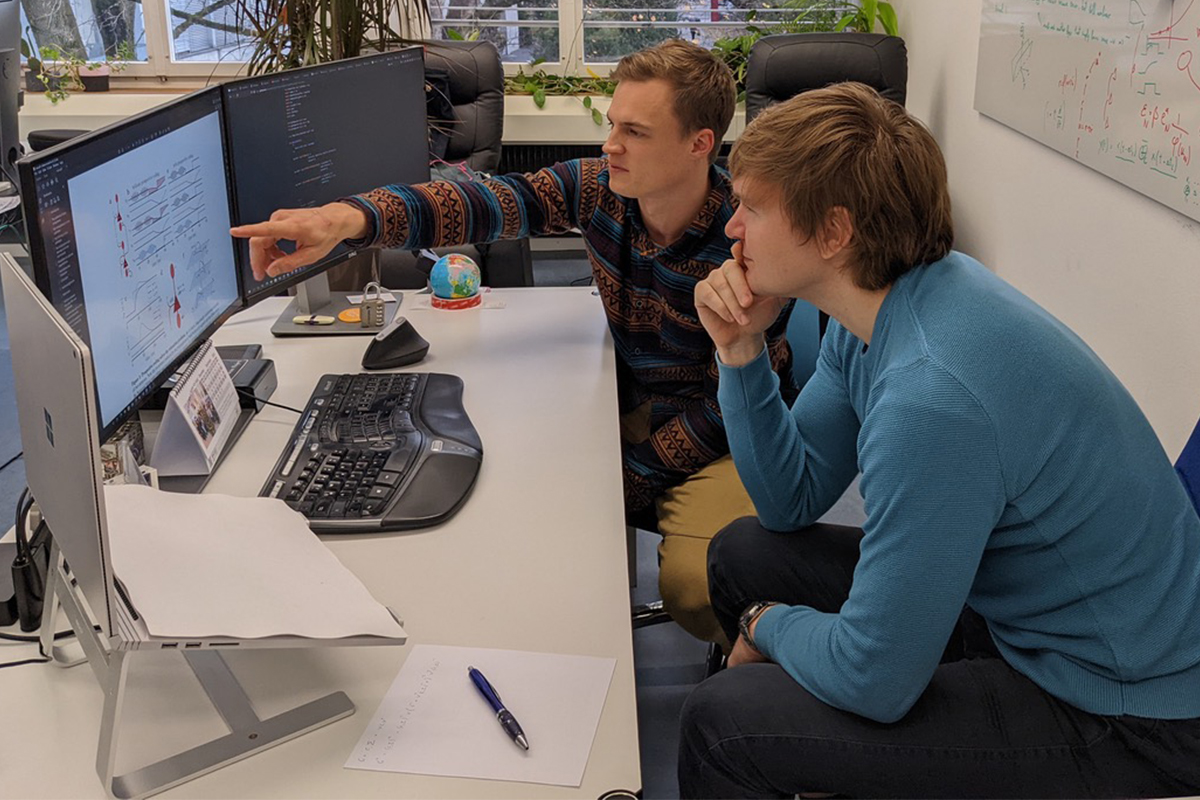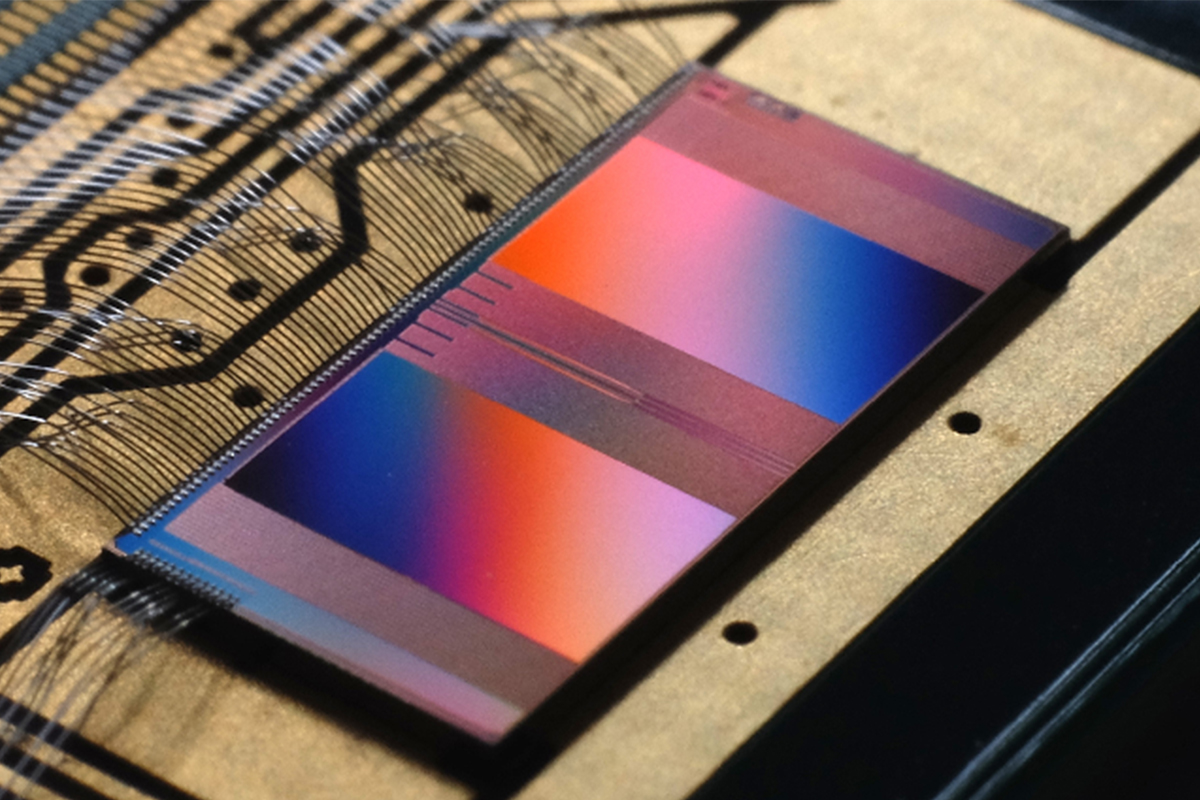"Neurons have the ability to look into the future"
Mihai A. Petrovici is investigating the brain's remarkably efficient learning mechanisms at the Department of Physiology. In this interview, he talks about the fascination and progress of modern brain research, but also about the consequences of Switzerland's withdrawal from European research programs.

In the brain, we deal with extremely fast sequences of sensory stimuli. We have developed a new theoretical model that shows how parts of the brain – such as the visual cortex – can process such sensory stimuli and thus learn from them. The model essentially says that neurons, or nerve cells, have the ability to look a bit into the future as they transmit their signals. Thus, signal processing in the brain can run at lightning speed and in an energy-efficient manner.
Is the model you have developed realistic?We simulated these equations in a small, simplified model of the visual cortex. In doing so, we were able to show that our theory allows this network to recognize rapid sequences of complex images such as handwritten digits, animals, and cars. This was previously not possible in biologically inspired artificial neural networks because all models to date take a long time to propagate signals through the network. Of course, it will take in-vivo experiments to definitively answer whether the brain functions according to these rules. Consequently, we are currently planning a collaboration with neurobiologists to investigate the mechanisms we predicted in the brain.
What will you look at next?So far, we have only tested the concept in conventional computers. In a next step, we would like to apply it in neuromorphic chips.
What are neuromorphic chips?These are computer chips that in effect contain neurons that communicate with each other via synapses, the connection points between nerve cells. We are working with the latest generation of chips, which are one thousand times faster than the brain while consuming a fraction of the energy of conventional computer chips. However, I should point out that we are a long way from a complete "copy" of a human brain, because these neuromorphic chips are still relatively small with only 512 neurons.

Not biological neurons, but electronic ones. They consist of transistors, but the currents that flow through them correspond to the currents and signals that flow through our nerve cells. Therefore, the brain's processes are not simply simulated in them, unlike on conventional computer chips. Instead, they are "emulated" – which means copying the physics of the brain into the physics of the chip. This is what makes their energy-efficiency and speed possible. In a sense, like the brain, we can say that these chips, like the brain, do not compute their underlying algorithms, but effectively "live" them.
Are there any practical applications that could result from your research?Since the chips are very energy-efficient and fast, many applications are possible. For example, they could lead to the development of so-called biomonitors in the medical field. These portable analysis tools can, for instance, continuously analyze heart rhythm or sleep, driven solely by body heat. In addition, these chips are comparatively robust due to their architecture and could therefore be used in demanding environments such as satellites. But our research also contributes to a better understanding of the biological brain. In the future, insights into the brain's learning processes could provide a better understanding of neurological disorders, such as Alzheimer's, Parkinson's, or even autism.
You are conducting research as part of the EU flagship "The Human Brain Project" and moved from the University of Heidelberg to the University of Bern five years ago. Why didn't you move to Lausanne, where this brain research project was initiated?Many people may not know that Bern plays a leading role in this research. We are a great team, and I can work on many of the scientific topics that I have always wanted to explore. But Bern is also ideally located. We have collaborations with the Universities of Zurich and EPFL, and part of my group is still in Heidelberg. So short distances are an advantage. And there's no denying that Bern is a beautiful city. I really like living here.
Switzerland recently ceased to be an associate member of the European research programs. Is this a disadvantage for your research in the Human Brain Project?This is a very sensitive question because it is political. There is no immediate impact for existing projects, such as our collaborations in the Human Brain Project, and they will continue as planned until 2023. But if we want to initiate new projects beyond that – and we definitely want to with our many ideas – we will encounter limitations. Switzerland is now considered a non-associated third country, which means that we as researchers can no longer lead European projects. Thankfully, we are receiving generous support from the Manfred Stärk Foundation, which enables our continued collaboration with the Heidelberg University, but clearly this can not replace the leadership of a European project. Furthermore, there is also the rule that researchers from two third countries are not allowed to be involved in the same project. This is problematic because we also want to collaborate with researchers who are not in the EU.
Swiss researchers could enter into more cooperation with other important research nations such as the United States or Great Britain?That's undoubtedly true, but it's not that easy because the structures in the EU have grown over decades and work very well. New collaborations of equivalent quality cannot simply be conjured up overnight. CERN or the more recent Human Brain Project are prime examples of successful long-term structures in which Switzerland plays a leading role and receives sizable EU funding.
What does the future hold?I would expect a solution to be found quickly. After all, everyone is aware that the research of the EU and Switzerland cross-fertilize and reinforce each other, and I think and hope that this insight will quickly prevail.
Media release: «Fast information processing with slow neurons», University of Bern, December 10, 2021
Bernese researchers have developed a theory that shows how the brain can efficiently learn extremely fast sequences of sensory stimuli. This can happen much quicker than previously thought if neurons (nerve cells) have a mechanism that allows them to "predict" the future. The Bernese work was selected for presentation from among nearly ten thousand submitted papers at the world's most important conference on artificial intelligence.
About Mihai A. Petrovici

Mihai A. Petrovici leads the research group “Neuro-inspired Theory, Modeling and Applications” (NeuroTMA) at the Department of Physiology and is co-lead of the “Computational Neuroscience” group together with Prof. Walter Senn. Petrovici studied physics at the University of Heidelberg and completed his dissertation on "Theory and Models for Neural Substrates" at the Kirchhoff Institute of Physics in 2015, graduating summa cum laude. Since 2016, he has been teaching and researching at the University of Bern, first as a post-doc and from 2020 as a senior researcher and group leader.
THE BERNESE CONTRIBUTION TO THE HUMAN BRAIN PROJECT
The Human Brain Project (HBP) is the largest brain research project in Europe and one of the most extensive research projects ever funded by the European Union. The Institute of Physiology at the University of Bern is involved in the HBP with the groups of Dr. Mihai Petrovici and Prof. Dr. Walter Senn. In 2020, it received a grant of 2.5 million euros for this purpose. The groups are developing theoretical models of neurons and networks in the brain that link behavior, learning, and the corresponding processes and changes in the brain. The theories are based on biophysical concepts and allow reconstruction of biological processes in so-called neuromorphic hardware, i.e. computer chips that function similarly to the brain itself.
About the author
Matthias Meili is a science journalist in Zurich.